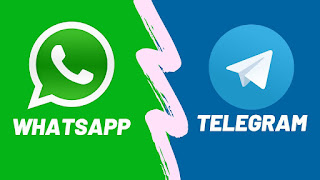SAN FRANCISCO – Motorola Inc. launched the first phase of its end-to-end enterprise mobile computing product line, Total Enterprise Access Mobility (TEAM), at VoiceCon this week.
The initial product release, TEAM Voice over Wireless LAN (VoWLAN), introduces two new ruggedized, single-mode VoWLAN smartphones designated EWP 1000 and EWP 2000, with Windows Mobile 6.1. The form factor of the phones is similar to popular cellular smartphones, measuring about 4.7 inches by 2 inches.
"These are fully functional smartphones," said Imran Akbar, vice president and general manager of Converged Communications at Motorola. "We chose Windows Mobile because we really wanted to take Voice over Wireless LAN beyond just voice. So Windows Mobile gives you applications, it gives you application development and gives you things like mobile email, calendar and PIM."
The TEAM release also includes two back-end servers that allow the phones to work on any wireless LAN and three leading PBX vendors which Motorola has not yet announced. The Wireless Services Manager (WSM) server manages PBX interoperability, push-to-talk services, mobility, security and power management. The Network Services Management (NSM) server handles provisioning of the devices. The push-to-talk features of the phones can be integrated with standard handheld radios as well, allowing users to talk to workers equipped with legacy radio gear.
Jack Gold, principal of J. Gold Associates, said VoWLAN smartphones in a form factor similar to popular consumer smartphones are very uncommon. Many comparable VoWLAN devices are large, clumsy machines built for harsh, rugged environments like warehouses, factories and retail stores.
"That's one of the interesting parts of this," Gold said. "This could actually be a good thing for them, in the sense that it makes sense that it makes the device more attractive to people. It brings in another class of users. If you're a store manager, you're not going to want to walk around with a 12-pound brick, so this allows them to bridge the two worlds between really heavy-duty users who've got to have the brick and the user who wants a phone but would like to have these other capabilities as well.
Akbar said Motorola will be building out the TEAM brand with subsequent releases next year. The next release, due in early 2009, will be a TEAM Express, a downloadable client that will work on a select number of other Windows Mobile Motorola devices such as the MC70 and MC75 PDAs. Akbar said this client would eventually be able to work on a broader variety of devices.
Motorola is also working on introducing dual-mode devices and fixed-mobile convergence (FMC) to TEAM within the next couple of years, Akbar said.
Gold said the TEAM solution has some potential, but he said making the technology proprietary to Motorola mobile devices at the outset limits its market.
"The issue right now for me is their technology seems to be very centered on their stuff, and I guess that's OK," Gold said. "What they're trying to do is work off their own installed base of devices and wireless LAN. But what they need to do is open up the technology so that it's more broadly applicable to folks that aren't Motorola shops."
Craig Mathias, principal of Farpoint Group, said TEAM will have a lot of appeal among Motorola's large installed base. "There are certainly applications where you want a handset that's just for voice, and there are plenty of those on the market," Mathias said. "But if you're looking for something that can do more than that, then you would look at a phone like this."
"It looks like a reasonable approach to addressing vertical markets," Mathias said. "And it might have appeal in horizontal markets as well. People who are upgrading office telephone systems and who are looking for something more mobility-centric will be interested in this. There are people, after all, who are never really at their desks, so buying them a phone that sits on the desk all day doesn't make sense."
By Shamus McGillicuddy, News Editor
SearchMobileComputing.com
Instant messaging news, reviews, software. LAN instant messaging, Corporate instant messaging, Business messengers, Intranet communication solutions.
Subscribe to:
Post Comments (Atom)
Durov: The phone of the richest man in the world was hacked through WhatsApp.
The founder of "VKontakte" and Telegram Pavel Durov said that back in November 2019 he warned about the vulnerability of the Whats...

-
Computer's personal often face problems when they have to take a break from their PC for some time and can’t answer to emails and instan...
-
The founder of "VKontakte" and Telegram Pavel Durov said that back in November 2019 he warned about the vulnerability of the Whats...
-
Primus Telecommunications Group, Inc. has entered into an agreement with Microsoft Corp. to provide Voice-over-Internet Protocol (VoIP) serv...

No comments:
Post a Comment